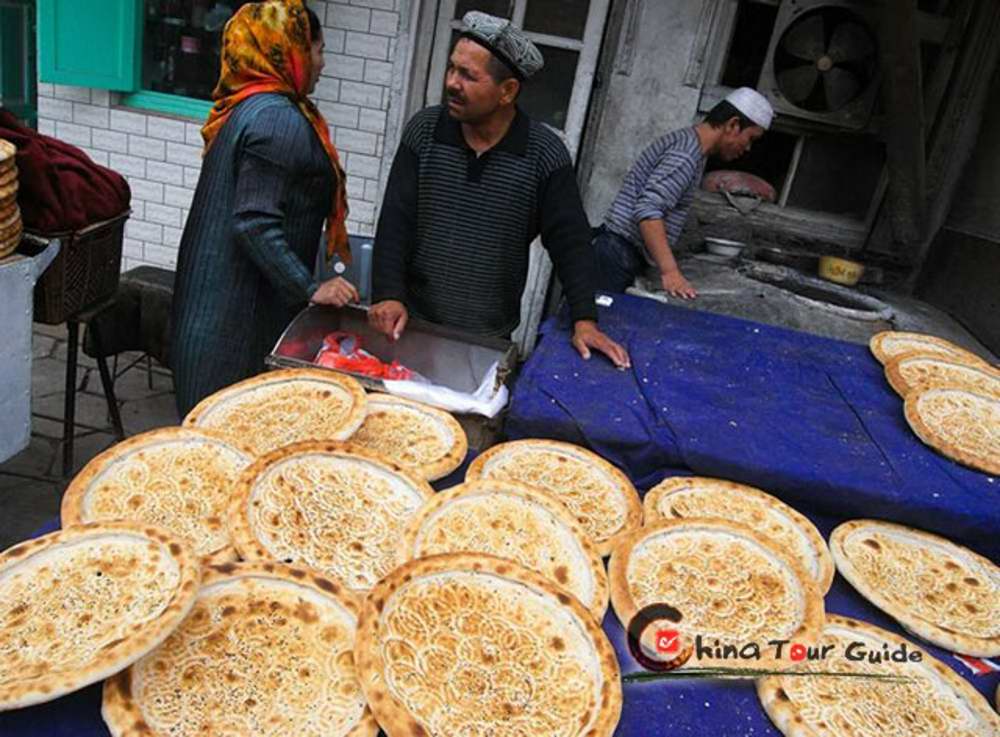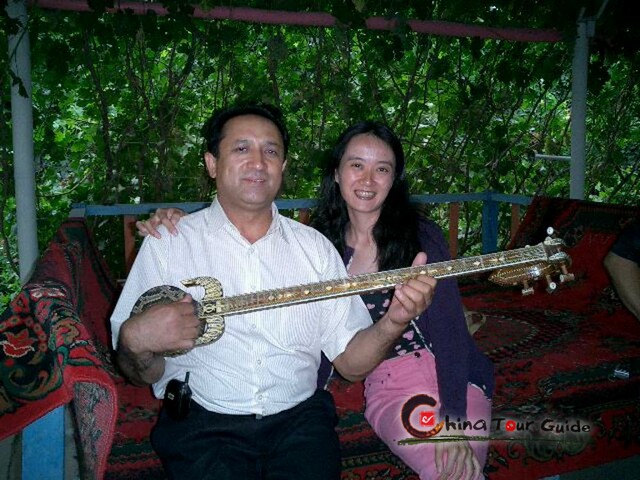Xinjiang Regional Museum
Xinjiang Regional Museum is a comprehensive historical museum in China. Xinjiang Regional Museum was originally established in 1953 as part of nearby People's Park, but was rebuilt and greatly enlarged at its current location in 1962. The current museum, which is built in a semi-modern style that compounds traditional architecture borrowed from the region's ethnic minorities, especially the ethnic Uyghurs. It is a very solid structure with a dome that stands 30 meters (33 yards) high and which offers one of the best views of the city of Urumqi.
In total there are over 50,000 items in the collection. These not only represent the ethnic lifestyle and humanity of the region but also illustrate its revolutionary spirit. With such an abundance of items on display, the exhibition is widely acknowledged for its comprehensive and informative nature both at home and abroad.
 |
 |
| Exterior of Xinjiang Regional Museum. | Unique dome in Urumqi. |
The highlight of display is the ancient corpses, for it was in this region that a great number of ancient and well preserved remains were discovered. These are quite different from the mummies in Egypt that were created by skilled embalming procedures; the Xinjiang corpses were dried by the particular natural environment. In all there are twenty-one specimens in the collection and include men, women, lovers, and generals. The 'Loulan beauty' is among the best preserved and famous ones in the museum. The 'Loulan beauty' has a reddish brown skin, thick eyelashes, charming large eyes, and long hair. This particular 'charming' corpse has survived for an estimated 4,000 years.
The displayed items include folk costumes (both everyday clothing as well as dress costumes), hunting and farming implements and various other tools, as well as sundry items that might make up the household of a typical villager in Xinjiang. Those items related to religious practices, courtship and marriage, and the celebration of important festivals, the idea being to provide a glimpse into the life of the various ethnic groups that are represented in Xinjiang.
 |
 |
| Local life relief in the museum. | Xijiang geograhic map in the hall of Xinjiang Regional Museum. |
The historical relics include carpentries, ironwares, bronze wares, bright and beautiful brocades, tomb figures, pottery, and coins, rubbings from stone inscriptions, and writings as well as weapons and so on. These give an insight into the past and show how the society of Xinjiang developed. There is even the fossil of a human head that dates back some 10,000 years.
Xinjiang Regional Museum's many regional and national treasures are a testimony to the province's broad cultural diversity, to its ancient prehistory and to its subsequent glorious history as a thriving and indispensable part of China's ancient Silk Road culture. Since many of the ancient Silk Road cities are but ruins today, with most of their interesting artifacts removed for protection (for posterity), the only way to get a full picture of what these ancient cities were like during their heyday is to pay a visit to Xinjiang Regional Museum in Urumqi. Of course, visiting the ruins of these ancient cities is an interesting if not requisite undertaking for any Silk Road aficionado; it's just that such a trip should naturally include a lengthy visit to Xinjiang Regional Museum in order to complete the picture, as it were.
Select Other Favorite Attractions
Guide for China tour,offers most value & amazing experience. In China,you can reply on us
Copyright © 2001 - 2025. All Rights Reserved to ChinaTourGuide.Com
Hotel Guangzhou | Guizhou Tours | Hong Kong Hotels | 香港酒店 | 广州酒店 | 广州会议酒店 | Indochina Tour
Guide for China tours, offers most value & amazing experience. Chinatourguide.com. Your reliable China tour agency.



